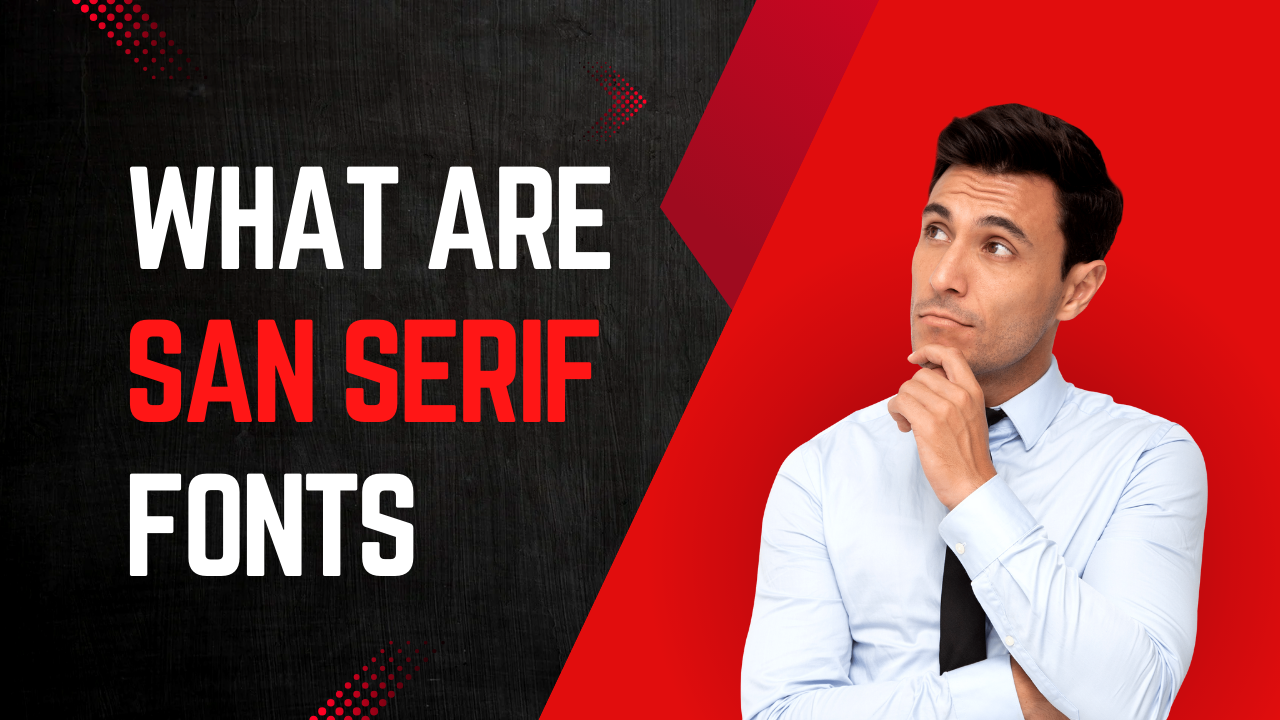Ever found yourself wondering about the different types of fonts used in design projects? The term “sans serif” can be confusing if you’re not familiar with it. If you’ve asked, “What exactly are sans serif fonts and why should I care?”, you’re in the right place. In this article, we’ll explain sans-serif fonts in simple terms that everyone can understand. By the end, you’ll know exactly what sets sans serif fonts apart and why they’re crucial in modern design. Let’s explore the world of sans-serif fonts together.
Definition and Characteristics
Sans serif fonts are typefaces that lack the small projecting features called “serifs” at the end of strokes. Unlike serif fonts, which have these decorative elements, sans serif fonts are characterized by their clean and straightforward design.
Key Characteristics:
- Lack of Serifs: Sans serif fonts are distinguished by their absence of serifs, giving them a simple and minimalist look.
- Uniform Stroke Width: The thickness of the lines in sans serif fonts remains consistent throughout, contributing to their modern appearance.
- Modern, Clean Appearance: These fonts are known for their contemporary aesthetic and easy readability, making them popular in digital and print media.
History and Evolution
Origins:
Sans serif fonts trace their origins back to the 18th century, emerging as a response to the ornate serif typefaces of the time. They were initially used sparingly for headings and signage due to their modern and unconventional appearance.
Popularity:
The 20th century marked a significant rise in the popularity of sans-serif fonts. With the advent of industrialization and modernist movements in art and design, sans-serif fonts became symbols of simplicity, clarity, and forward-thinking. Their clean lines and readability made them ideal for advertising, branding, and signage. In the digital age, sans serif fonts have continued to dominate, favored for their legibility on screens and versatility across different media platforms.
Types of Sans Serif Fonts
Sans serif fonts are categorized into several main types, each with distinct features that influence their appearance and usage in design:
Grotesque
Known for its early, rugged appearance with irregular strokes and varying proportions. It evolved from serif typefaces and maintains a somewhat blunt and expressive style.
Neo-Grotesque
A refined version of the grotesque sans serif, characterized by more consistent and balanced letterforms. It became popular in the early 20th century for its clean and versatile design.
Humanist:
Inspired by classical Roman inscriptions, humanist sans serif fonts emphasize legibility and readability. They often feature subtle variations in stroke width and more organic shapes, resembling handwritten forms.
Geometric:
Based on geometric shapes and constructed with precise, mathematical proportions. Geometric sans serif fonts are known for their minimalist appearance, often featuring circular or triangular elements.
Uses in Design
Sans serif fonts are preferred in various design contexts for their clarity, versatility, and modern appeal:
Web Design
Sans serif fonts are widely used in web design due to their clean lines and readability on screens of different resolutions. They enhance user experience by making text easy to read, which is essential for digital content consumption.
Branding:
In branding, sans serif fonts convey a sense of modernity and simplicity. They are often chosen to reflect a brand’s identity as contemporary, reliable, and forward-thinking. Sans serif fonts can help create a strong visual impact in logos, advertisements, and marketing materials.
Print Media
Sans serif fonts are also popular in print media, where their clean design ensures readability across different types of paper and printing techniques. They are used in magazines, newspapers, brochures, and posters to convey information clearly and effectively.
Benefits
Sans serif fonts offer several advantages that make them ideal for design projects:
Readability
The absence of decorative serifs and uniform stroke widths contributes to enhanced readability, especially on digital screens. Sans serif fonts are clear and easy to read, even in smaller sizes.
Versatility
Sans serif fonts are versatile and suitable for various design applications. They can adapt to different styles and aesthetics, making them a go-to choice for both digital and print media.
Modern Appeal:
Known for their contemporary look, sans serif fonts convey a sense of modernity and simplicity. They align well with current design trends and are often chosen to give a clean, fresh appearance to projects.
Choosing the Right Sans Serif Font
When selecting a sans-serif font for your design project, consider the following key factors:
Purpose:
Determine the intended use of the font. Whether it’s for body text, headlines, or branding, choose a font that aligns with the project’s goals and communicates effectively.
Readability
Prioritize readability across different mediums. Ensure the font is legible in various sizes and on different screens or print materials. Opt for clear letterforms and appropriate spacing.
Brand Identity
Select a font that reflects the brand’s personality and values. Consider whether the font’s style – whether modern, classic, or quirky – matches the brand’s identity and message.
Conclusion
sans serif fonts, with their clean lines and modern appeal, are essential in contemporary design. They excel in clarity and readability across digital and print media, making them versatile for various design applications. Choosing the right sans-serif font enhances visual communication, ensuring projects resonate effectively with audiences. Embracing their simplicity and impact, sans serif fonts remain a cornerstone in shaping compelling and engaging design solutions.
